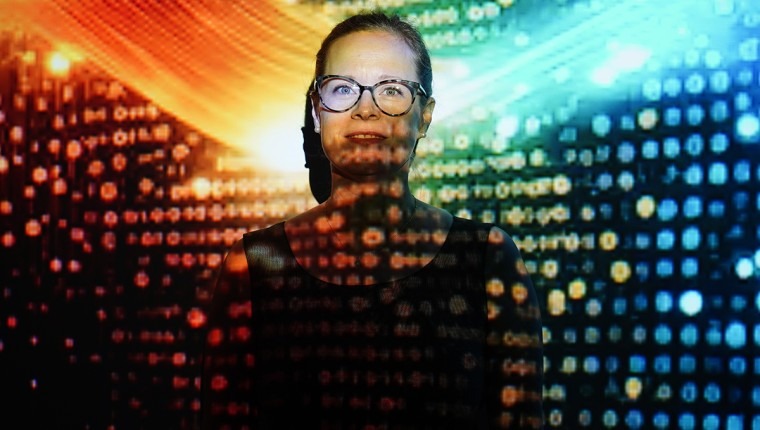Turns Environmental Data
into Performance Art
February 6 at 7:30 pm
USF Concert Hall, Tampa
Free
Details here
A musical score is, if anything, data. Notes on a page, little dots jumping up and around horizontal lines, all meshed together to create sound by a performer.
Science also is driven by data, information that tells us details about the world around us. But the language of science is too technical and esoteric for many people, so they need another way to grasp it.
Why not bring music and science together? That’s the premise of an innovative group at the University of South Florida, who present data-driven music played by the USF Symphonic Band & Wind Ensemble on Tuesday night.
“We’re translating trends of scientific data for the human ear,’’ says Dr. Heather O’Leary, a USF anthropologist who spearheads the science-to-music project.
“Music lends itself well to this, and it can help us learn more about data and to create better data literacy. What does it mean when we can listen to a musical pattern taken from a spread sheet?’’
O’Leary is director of Crescendo, an interdisciplinary team of USF faculty and students working to create music based on environmental science. The acronym stands for Communicating Research Expansively through Sonification and Community-Engaged Neuroaesthetic Data-literacy Opportunities.
The premise of Crescendo is using data-driven art forms, such as music, to create more accessible ways for the public to understand various areas of research and their economic and health impacts. In this case, the team applied findings from marine science projects involving the Florida environment.
O’Leary joined Paul Reller, an associate professor of music, and Matthew McCutchen, the university’s director of bands. On Tuesday, student musicians present Sanctuary/Cardinal Flow, based on data about the depletion of coral reefs off the coast of Florida and the destructive wave of red tide that hit the state in 2017.
“I care very much about making this data accessible to everyone because it’s important,’’ O’Leary adds. “Not everyone can understand these spreadsheets, and we’re all taught different ways of interpreting information.
“The question is, how do we expect people of Florida to benefit from this data if we aren’t communicating it in the right way? Translating it into music is one way to educate people.’’
To make that translation, the team met with five music students and brainstormed how to turn technical data into a musical score, an effort called “data sonification.’’
“We explained the spreadsheets to them, and they made creative decisions on how to match the data with music,’’ she says. “They used different instruments, pitches and tempos to match the data.’’
A similar technique was used at a recent meeting of the American Association of Chemistry, where a researcher assigned a color to each element of the Periodic Table, then gave the colors a corresponding note or chord.
Similarly, researchers at the Massachusetts Institute of Technology aligned 20 common amino acids with notes on the C minor scale. The heaviest – tryptophan – was the lowest pitch while the lightest amino acid – glycine – was the highest. A protein’s secondary structure was used to generate rhythm.
To create the music for the USF concert, O’Leary combined three data streams – environmental distress indicators, economic fallout, and chatter on social media.
The first movement, Sanctuary, is a sonification of when the Florida Reef Tract was under siege from Stony Coral tissue loss disease, from 2012 to 2020. The second movement, Cardinal Flow, explores Florida’s most harmful algae bloom – “red tide” – the one that ran from 2017 to 2019 and forced Hillsborough County to declare a State of Emergency.
In their effort to translate raw data to musical notes, O’Leary says, the performers will recreate a pattern in sound that expresses “the true economic and social costs to the threats on our coasts.’’
USF Symphonic Band & Wind Ensemble
Tuesday, February 6 at 7:30 pm
Free
University of South Florida
USF Concert Hall, MUS 101
4202 East Fowler Ave
Tampa FL 33620
813-974-2301
Details here





